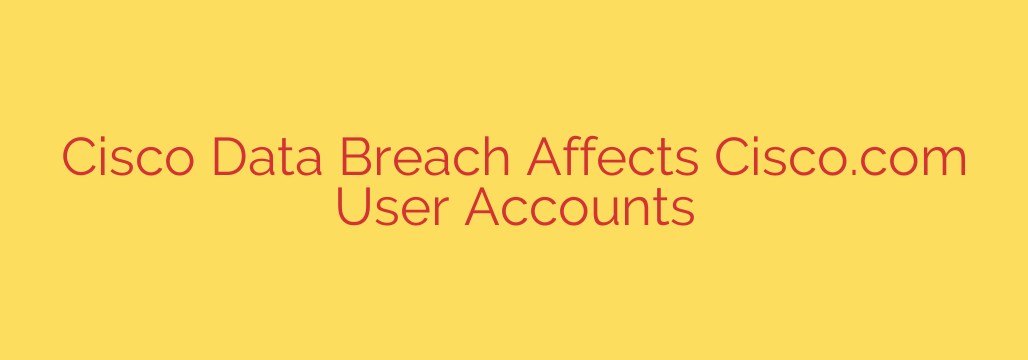
Cisco Data Breach: What You Need to Know and How to Protect Your Account
Recent reports have confirmed a significant security incident involving Cisco, the networking and cybersecurity giant. The data breach specifically targeted systems related to Cisco.com accounts, exposing user data and highlighting the persistent threat of cyberattacks, even against the world’s most security-conscious companies.
If you have a Cisco.com account for product support, software downloads, or professional certifications, this information is critical for securing your digital identity. Here’s a clear breakdown of what happened, who is affected, and the immediate steps you should take to protect yourself.
Understanding the Security Incident
The breach was not a direct compromise of Cisco’s core corporate network. Instead, it stemmed from a misconfiguration in a cloud storage environment managed by a third party. This type of incident, often called a third-party risk or supply chain vulnerability, is increasingly common as organizations rely on a complex web of external services.
According to the investigation, an improperly secured cloud “bucket” was left exposed, allowing unauthorized access. This exposed a significant amount of data related to users of the Cisco.com portal.
The compromised data reportedly includes:
- Usernames and full names
- Email addresses
- Company or employer information
- User preferences and settings
Crucially, reports indicate that highly sensitive information like passwords in plain text, financial details, and Social Security numbers were not exposed in this particular incident. However, the leaked data is more than enough for malicious actors to launch sophisticated secondary attacks.
How to Protect Your Account: Actionable Security Steps
Even if your password wasn’t directly stolen, the exposure of your name, email, and employer makes you a prime target for follow-up attacks. It is essential to act decisively to mitigate the risk.
1. Reset Your Password Immediately
As a primary precaution, Cisco has initiated a mandatory password reset for all Cisco.com accounts. Even if you haven’t received a notification yet, you should proactively change your password. When creating a new one, follow best practices:
- Make it long (at least 12-16 characters).
- Use a mix of uppercase letters, lowercase letters, numbers, and symbols.
- Do not reuse a password from another website or service.
2. Enable Multi-Factor Authentication (MFA)
This is the single most effective step you can take to secure your account. Multi-factor authentication adds a second layer of security beyond your password, such as a code sent to your phone or generated by an authenticator app. Even if an attacker has your password, they cannot access your account without this second factor. If you haven’t enabled MFA on your Cisco.com account, do it now.
3. Beware of Targeted Phishing Attacks
With your name, email, and employer information in hand, cybercriminals can craft highly convincing phishing emails. Be on high alert for messages that appear to be from Cisco or your employer. These emails might:
- Ask you to click a link to “verify your account.”
- Claim there is a security problem that requires your immediate attention.
- Contain fake invoices or documents that install malware when opened.
Always verify the sender’s email address and hover over links before clicking to see the actual destination URL. When in doubt, go directly to Cisco.com by typing the address into your browser instead of using a link from an email.
4. Review and Secure Linked Accounts
If you use the same email and password combination from your Cisco account on other platforms (like LinkedIn, your corporate VPN, or other tech portals), you must change those passwords as well. Attackers will use the leaked credentials in “credential stuffing” attacks to try to break into your other accounts. Using a unique, strong password for every account is a fundamental security practice.
The Broader Lesson: Proactive Security is Non-Negotiable
This incident serves as a stark reminder that no organization is immune to data breaches. It also underscores the importance of individual security hygiene. While companies are responsible for securing their systems, users play a vital role in protecting their own data.
By taking proactive steps like using strong, unique passwords and enabling MFA wherever possible, you can build a robust defense against the fallout from inevitable data breaches. Stay vigilant, treat unsolicited emails with suspicion, and make security a regular part of your digital life.
Source: https://www.bleepingcomputer.com/news/security/cisco-discloses-data-breach-impacting-ciscocom-user-accounts/








